
Shamere McKenzie (Narrative 2)
There are an estimated 403,000 people living in modern slavery in the United States (GSI 2018). Sex trafficking exists throughout the country. Traffickers use violence, threats, lies, debt bondage and other forms of coercion to compel adults and children to engage in commercial sex acts against their will. The situations that sex trafficking victims face vary, many victims become romantically involved with someone who then forces them into prostitution. Others are lured with false promises of a job, and some are forced to sell sex by members of their own families. Victims of sex trafficking include both foreign nationals and US citizens, with women making up the majority of those trafficked for the purposes of commercial sexual exploitation. In 2015, the most reported venues/industries for sex trafficking included commercial-front brothels, hotel/motel-based trafficking, online advertisements with unknown locations, residential brothels, and street-based sex trafficking. Shamere McKenzie came to the US from Jamaica when she was 6 years old. A talented track star, she was running at college level when she injured her hamstring. With her scholarship in jeopardy, she met someone who said they could help her return to school, all she had to do was dance at his nightclub. One evening, however, Shamere was taken to a house in Brooklyn where she was told to have sex with a customer. When she refused, her trafficker threatened her life, and when she tried to leave when they returned home he beat her to unconsciousness. For eighteen months Shamere McKenzie was forced in to prostitution and trafficked across five different states under constant threats of violence. She finally escaped when her trafficker allowed her to call her mother and she was able to get a flight back to New York.

Chong Kim
There are an estimated 403,000 people living in modern slavery in the United States (GSI 2018). Sex trafficking exists throughout the country. Traffickers use violence, threats, lies, debt bondage and other forms of coercion to compel adults and children to engage in commercial sex acts against their will. The situations that sex trafficking victims face vary, many victims become romantically involved with someone who then forces them into prostitution. Others are lured with false promises of a job, and some are forced to sell sex by members of their own families. Victims of sex trafficking include both foreign nationals and US citizens, with women making up the majority of those trafficked for the purposes of commercial sexual exploitation. In 2015, the most reported venues/industries for sex trafficking included commercial-front brothels, hotel/motel-based trafficking, online advertisements with unknown locations, residential brothels, and street-based sex trafficking. Chong Kim’s family moved to the United States from South Korea when she was a toddler. At the age of 19 Kim met a man on a night out in Dallas, Texas whom she began dating. After a few weeks of dating, this man abducted Chong Kim and destroyed her naturalization documents. She was forced into prostitution, sent out with other women to a variety of places across the country. After a year and a half Kim was able to escape while working a casino in Las Vegas, befriending people on the maintenance staff who helped her escape.
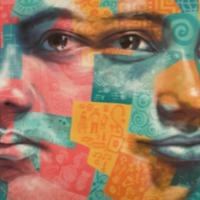
L.
There are an estimated 145,000 people living in conditions of modern slavery in Italy (GSI 2018). Italy is a destination, transit, and source country for women, children, and men subjected to sex trafficking and forced labour. Victims originate from Nigeria, Romania, Morocco, China, and other countries. Female victims are often subjected to sex trafficking in Italy after accepting promises of employment as dancers, singers, models, restaurant servers, or caregivers. Romanian and Albanian criminal groups force Eastern European women and girls into commercial sex. L fell in love with an older man who convinced her to runaway to Italy with him. After a while of staying at his friend’s house, L’s boyfriend coerced her into prostitution. She escaped one day with the help of an Albanian client who took her back home.
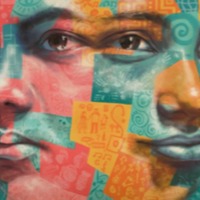
F.
There are an estimated 145,000 people living in conditions of modern slavery in Italy (GSI 2018). Italy is a destination, transit, and source country for women, children, and men subjected to sex trafficking and forced labour. Victims originate from Nigeria, Romania, Morocco, China, and other countries. Female victims are often subjected to sex trafficking in Italy after accepting promises of employment as dancers, singers, models, restaurant servers, or caregivers. Romanian and Albanian criminal groups force Eastern European women and girls into commercial sex. F had ambitions of going to university to study law. One day she was coming home from work when a car stopped in front of her. Two men jumped out and kidnapped her. She was kept for a week by the sea, sexually and physically abused, before being taken to Italy by speedboat. Upon arrival, F was forced into prostitution. She tried to escape once, being deported back to Albania by Italian police, however her trafficker found her and re-trafficked her back to Italy. F was finally able to escape after falling in love with one of her clients who helped her.
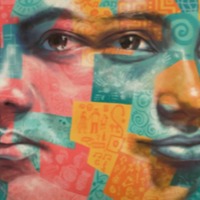
V.P.
There are an estimated 145,000 people living in conditions of modern slavery in Italy (GSI 2018). Italy is a destination, transit, and source country for women, children, and men subjected to sex trafficking and forced labour. Victims originate from Nigeria, Romania, Morocco, China, and other countries. Female victims are often subjected to sex trafficking in Italy after accepting promises of employment as dancers, singers, models, restaurant servers, or caregivers. Romanian and Albanian criminal groups force Eastern European women and girls into commercial sex. V.P. travelled to Greece for work when she was 16 years old where she was introduced to a man who promised to marry her. Instead he forced her into prostitution, forcing her to work up to 12hrs and beating her daily. After 2 years V.P. was able to escape and came back to Albania. However, unable to find work she left Albania for Italy where she was exploited as a prostitute for a second time.
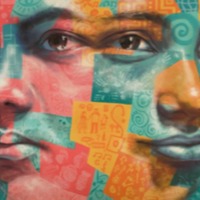
Ella
There are an estimated 155,000 people living in modern slavery in South Africa (GSI 2018). South Africa remains a source, transit and destination country for men, women and children subjected to forced labour and sex trafficking. South African children were recruited from poor, rural areas to urban centres, such as Johannesburg, Cape Town, Durban, and Bloemfontein, where girls were subjected to sex trafficking and domestic servitude and boys are forced to work in street vending, food service, begging, criminal activities, and agriculture. Local criminal rings organized child sex trafficking, Russian and Bulgarian crime syndicates facilitated trafficking within the Cape Town commercial sex industry, and Thai and Chinese nationals often organized the sex trafficking of Asian men and women. Nigerian syndicates dominated the commercial sex industry in several provinces. To a lesser extent, syndicates recruited South African women to Europe and Asia, where some are forced into prostitution, domestic servitude, or drug smuggling. At 13 years old, Ella* was abducted by a boy from her school and forced to marry him. She was taken from Lesotho to South Africa, kept in the house and sexually assaulted every night. She was finally able to escape after three months.
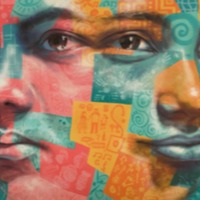
Vian
ISIS has singled out the Yezidi minority, notably its women and children, for particularly brutal treatment. In August 2014, ISIS fighters abducted hundreds, possibly thousands, of Yezidi men, women and children who were fleeing the IS takeover from the Sinjar region, in the north-west of the country. Hundreds of the men were killed and others were forced to convert to Islam under threat of death. Younger women and girls, some as young as 12, were separated from their parents and older relatives and sold, given as gifts or forced to marry ISIS fighters and supporters. Vian was 15 years old when kidnapped by ISIS in August 2014 and held for 4 months in Raqqa, Syria. Vian tells of the atrocities she witnessed against girls as young as 7 by ISIS men. One afternoon Vian ran away and was able to make it to Turkey where her Uncle picked her up and brought her home to her family.
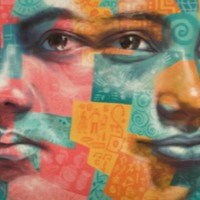
Madline
ISIS has singled out the Yezidi minority, notably its women and children, for particularly brutal treatment. In August 2014, ISIS fighters abducted hundreds, possibly thousands, of Yezidi men, women and children who were fleeing the IS takeover from the Sinjar region, in the north-west of the country. Hundreds of the men were killed and others were forced to convert to Islam under threat of death. Younger women and girls, some as young as 12, were separated from their parents and older relatives and sold, given as gifts or forced to marry ISIS fighters and supporters. Madline was 17 years old when she was kidnapped by ISIS in her hometown of Sinjar, Iraq in August 2014. She was held for 3 months before she and the other Yazidi women were able to escape.
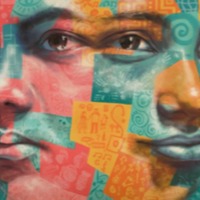
Shin Dong Hyuk (Narrative 2)
The Global Slavery Index 2018 estimates that there are 2,640,000 people living in conditions of modern slavery in The Democratic People’s Republic of Korea (North Korea). Men, women and children are subjected to forced labour and sex trafficking. Government oppression in the DPRK prompts many North Koreans to flee the country in ways that make them vulnerable to human trafficking in destination countries. Many of the estimated 10 000 North Korean women and girls who have migrated illegally to China to flee abuse and human rights violation are particularly vulnerable to trafficking. Some lure, drug, detain or kidnap North Korean women on their arrival, others offer jobs but subsequently force the women into prostitution, domestic service, or forced marriage. If found, Chinese authorities often repatriate victims back to the DPRK where they are subjected to harsh punishment including forced labour in labour camps or death. Shin Dong Hyuk was born in a North Korean prison labour camp in 1982. He tells of his experience growing up in the camp and being forced to work from a very young age. In the camp, food was restricted and beatings were common, by both prison officers and Shin Dong’s own mother. When he was fourteen, Shin Dong’s mother and brother attempted to escape the camp. He was forced to watch their execution and tortured himself for presumped involvement in their escape. In late 2004 Shin Dong was partnered with a man who had seen the outside world and they began to plan their own escape. In January 2005, they escaped while collecting firewood, however Shin Dong was the only one to succeed.
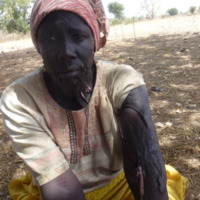
Alom Kuol Koor
There are an estimated 465,000 people living in modern slavery in Sudan (GSI 2018). Between 1983 and 2005, the central government of Sudan enslaved tens of thousands of black South Sudanese Christian and traditionalist people. It was part of a genocidal war against South Sudan, with a simple aim: to force South Sudan to become Arab and Muslim. Alom Kuol Koor was captured in 1998 and forced to walk to north Sudan. Upon arrival he was given to her ‘master’ and forced into domestic servitude. He was finally liberated in 2016 when he escaped and met with a slave retriever in a neighbouring village.
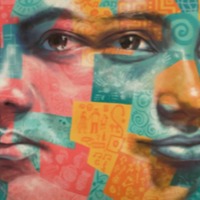
Saidu
There are an estimated 36,000 people living in conditions of modern slavery in Sierra Leone (GSI 2018). Sierra Leone is a source and destination country for men, women and children subjected to forced labour and sex trafficking. During the Sierra Leone Civil War 1991 to 2002 the Revolutionary United Front (RUF) sought to mobilise a youth underclass to form a ‘people’s army’ to overthrow the Momoh regime. The RUF abducted and trained numbers of captured youth to fight as child soldiers in their guerrilla warfare. Saidu emphasises the difficulties faced even by those not tainted with RUF violence in going back home. It is this wartime suspicion and hostility on the part of both civilians and military towards any dishevelled 'bush creature' that explains why the RUF/ SL strategy of abducting young Sierra Leoneans and turning them into combatants by force was so surprisingly effective. Once caught, most young people soon realised they had nowhere to run-that they risked death at the hands of government soldiers and civilians.
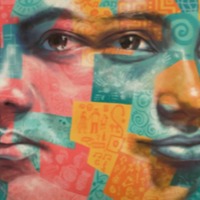
Musa
There are an estimated 36,000 people living in conditions of modern slavery in Sierra Leone (GSI 2018). Sierra Leone is a source and destination country for men, women and children subjected to forced labour and sex trafficking. During the Sierra Leone Civil War 1991 to 2002 the Revolutionary United Front (RUF) sought to mobilise a youth underclass to form a ‘people’s army’ to overthrow the Momoh regime. The RUF abducted and trained numbers of captured youth to fight as child soldiers in their guerrilla warfare. Musa, now about 20, was captured and forcibly inducted by the RUF/SL in a raid into north-western Sierra Leone in January 1995. Although he completed guerrilla training and served on operations, he never gained any promotion in the movement, remaining ambivalent about the struggle. He is frank that his lack of conviction was more a question of the hardship than of any political objection. He found that the RUF's ideological teaching about the state of Sierra Leone made sense. When interviewed in October 1996 he had managed to escape four weeks previously, after nearly two years, and had been re-accepted in his home community, a town not badly affected by the war. Musa provides a remarkable account of RUF/SL aims and operations, and of life in one of the guerrilla camps. In some respects, the account supports the picture the movement paints in its own propaganda document (RUFSL, 1995). The Gurkhas referred to in the account were a mercenary force of ex-Gurkhas led by a Canadian Vietnam veteran [Colonel Robert Mackenzie] hired by the NPRC government. Mackenzie was killed, and the survivors were withdrawn shortly afterwards, to be replaced by the South African private security firm Executive Outcomes.]
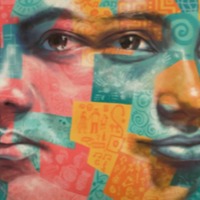
Gabriel
There are an estimated 36,000 people living in conditions of modern slavery in Sierra Leone (GSI 2018). Sierra Leone is a source and destination country for men, women and children subjected to forced labour and sex trafficking. During the Sierra Leone Civil War 1991 to 2002 the Revolutionary United Front (RUF) sought to mobilise a youth underclass to form a ‘people’s army’ to overthrow the Momoh regime. The RUF abducted and trained numbers of captured youth to fight as child soldiers in their guerrilla warfare. Gabriel* was captured as a youth in a raid by the Revolutionary United Front (RUF) in Sierra Leone. Gabriel tells of how he escaped from the militant forces after being held for a week.
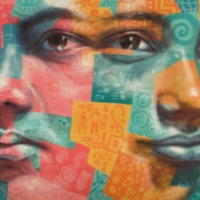
Dut Yai Yai
Dut Yai Yai was ‘redeemed’ (bought out of slavery) by Christian Solidarity International (CSI), a Zurich-based international human rights organization, in January 2007. He told his story to CSI staff in Aweil State, Southern Sudan. Along with the three main types of modern slavery (chattel slavery, debt bondage, and contract slavery), war slavery is another form of contemporary bondage. Thousands of women and children were taken into slavery during the decades of Sudan’s civil war, mainly from Northern Bahr El Ghazal and the Nuba Mountains. Slave-taking was revived in 1985 by the National Islamic government of Sudan primarily as a weapon against counterinsurgents in the South, and secondarily a way to reimburse its surrogate soldiers for neutralizing this threat. In 1989 the government created the Popular Defense Forces (PDF), militia trained to raid villages and take people as slaves. PDF recruits were allowed to keep whoever they captured, along with booty of grain and cattle. One study documents 12,000 abductions by name, while NGOs offer estimates ranging from 15,000 to 200,000. The slaves were often moved to large towns in the north on week-long journeys during which the women were repeatedly raped, and then sold to new masters who used them without pay for farming and sexual services. The peace process brought these PDF abductions to an end, but inter-tribal abductions continue in Southern Sudan. In addition, Sudanese children are used by rebel groups in the ongoing conflict in Darfur; Sudanese boys from the country’s eastern Rashaida tribe continue to be trafficked to the Middle East for use as camel jockeys; the rebel organization “Lord’s Resistance Army” has forcibly conscripted children in Southern Sudan for use as combatants in its war against Uganda; and the institution of chattel slavery continues in southern Darfur and southern Kordofan.
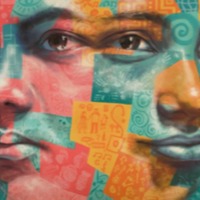
Choi MA
The Global Slavery Index 2018 estimates that there are 2,640,000 people living in conditions of modern slavery in The Democratic People’s Republic of Korea (North Korea). Men, women and children are subjected to forced labour and sex trafficking. Government oppression in the DPRK prompts many North Koreans to flee the country in ways that make them vulnerable to human trafficking in destination countries. Many of the estimated 10 000 North Korean women and girls who have migrated illegally to China to flee abuse and human rights violation are particularly vulnerable to trafficking. Some lure, drug, detain or kidnap North Korean women on their arrival, others offer jobs but subsequently force the women into prostitution, domestic service, or forced marriage. If found, Chinese authorities often repatriate victims back to the DPRK where they are subjected to harsh punishment including forced labour in labour camps or death. Choi MA crossed the border into China with a friend in 2001 after being swindled out of her money by a fisherman. Upon arrival, they were both sold to a farmer by a Chinese family they had asked for help. After living a year at this place Choi MA escaped and worked as a house and restaurant helper. Later she was arrested by the police. In April 2004 Choi MA was repatriated to North Korea but managed to escape for a second time in October 2004. Eventually she was able to make it to South Korea.
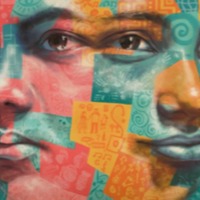
Bahng Mi Sun
The Global Slavery Index 2018 estimates that there are 2,640,000 people living in conditions of modern slavery in The Democratic People’s Republic of Korea (North Korea). Men, women and children are subjected to forced labour and sex trafficking. Government oppression in the DPRK prompts many North Koreans to flee the country in ways that make them vulnerable to human trafficking in destination countries. Many of the estimated 10 000 North Korean women and girls who have migrated illegally to China to flee abuse and human rights violation are particularly vulnerable to trafficking. Some lure, drug, detain or kidnap North Korean women on their arrival, others offer jobs but subsequently force the women into prostitution, domestic service, or forced marriage. If found, Chinese authorities often repatriate victims back to the DPRK where they are subjected to harsh punishment including forced labour in labour camps or death.Bahng Mi Sun escaped North Korea in 2004. She tells of how after entering China, she was forcibly separated from her children and sold. Though she was able to eventually escape, while seraching for her children she was caught by Chinese police and forcibly repatriated to North Korea where she was forced to work in a labour camp.
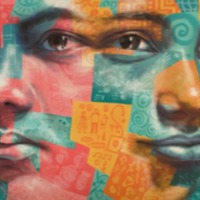
Kyial
There are an estimated 24,000 people living in modern slavery in Kyrgyzstan (GSI 2018). The country remains a source, transit and destination country for men, women and children subjected to forced labour and sex trafficking. Moreover, women in the country are often subject to kidnapping and forced marriage, an act that was only outlawed in the country in 2013 when authorities recognised it could lead to marital rape, domestic violence and psychological trauma. However, in some communities the practice remains common. Kyial was 20 years old when she was kidnapped by an acquaintance. She kept calling her mother for help, but to no avail. Kyial was raped on the first night in her kidnapper’s home. Unlike many other women, Kyial was able to escape. She contacted her friend, who in turn connected her to Open Line, an NGO based in Bishkek that offers kidnapped women counselling and legal advice.
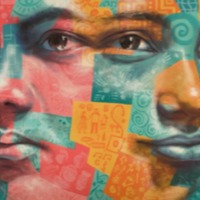
Shadrack
In 1993, Burundi’s first democratically elected president was assassinated in a coup d’état. Melchior Ndadaye, of the majority Hutu ethnic group, had sought during his three months in office to ease tensions between Hutu and the minority Tutsi, which had ruled Burundi for decades and continued to dominate the army. In response, Hutu paramilitary groups formed, and as quid pro quo attacks between Hutu and Tutsi escalated, Burundi spiraled into civil war.Among the many victims of the war were children. Indignant over Ndadaye’s death and the denial of political power the Hutu believed their due, extremist factions exhorted teenagers and even younger children to join their ranks, and for more than a decade, thousands of children lived in Burundi’s forests in deplorable conditions, raiding villages, camps, and military installations, both suffering and committing horrific violence. Many were girls kept as sexual slaves for older soldiers. Shadrack joined the FNL rebellion after the army came to his village and killed a number of his relatives and neighbours, he was 13 years old. Shadrack tells of his experience as a child soldier and how he came to leave the rebellion.
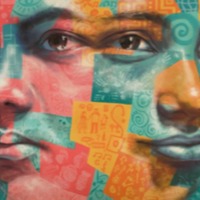
Robel
There are an estimated 518,000 people living in modern slavery in Egypt, 465,000 in Sudan and an estimated 451,000 in Eritrea (GSI 2018). Since 2006 tens of thousands of Eritreans fleeing widespread human rights abuses and destitution have ended up in Egypt’s Sinai Peninsula. Until 2010, they passed through Sinai voluntarily and generally without any problems and crossed in to Israel. However, since then, Sudanese traffickers have kidnapped Eritreans in eastern Sudan and sold them to Egyptian traffickers in Sinai who have subjected at least hundreds to violence in order to extort large sums of money from their relatives. Robel*, a 26-year-old Eritrean man, recalls how he was held by a trafficker in Sinai for three months in late 2010.
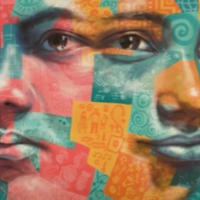
Bennu
There are an estimated 3.8 million people living in conditions of modern slavery in Chian (GSI 2018). Women and girls from South Asia, Southeast Asia and Africa are trafficked in to forced marriage in the country for fees of up to £30,000. The gender imbalance caused by the One Child Policy and the cultural preference for male children, has caused a shortage of women which has led to the trafficking of women to be sold as brides. As a result many women find themselves either deceived by promises of employment, sold or abducted and forced into marrying Chinese men who have paid for them. Kachin people are an ethnic minority who are predominantly Christian. Armed conflict between Myanmar military and the Kachin Independence Army has made life in the area difficult. This was exacerbated in 2011 with the end of a cease fire that left over 100,000 people internally displaced. In the camp where many of these people live there is little opportunity to earn a living. The government have made it worse by blocking aid to displaced people. This has led to women and girls becoming particularly vulnerable to trafficking as they search for jobs outside the country, often in China. Bennu was living in a Kachin refugee camp when she was trafficked to China and forced to have a sexual relationship with a Chinese man. She was also forced to do all the housework. Bennu was able to escape with the help of a fellow Kachin man.